
How to protect Cycas in winter?
in a pot or in open ground
Contents
Cycas revoluta, also called Japanese cycas, is a prehistoric plant that has survived since ancient times. This strange primitive plant resembling both a fern and a palm is nonetheless a particularly ornamental species, much sought-after in landscape design. Not very hardy, cultivation in open ground is only possible on Mediterranean and sometimes Atlantic coasts, it will thrive in a pot in other regions and will be splendid on a balcony, a terrace or indoors. Discover our tips to protect your Cycas revoluta in open ground or in a pot.
Frost-tender false palm
Resembling a small palm and a tree fern, Cycas revoluta is a plant native to tropical or subtropical regions. Its hardiness is therefore limited and does not exceed −6 to −8°C in very sheltered spots. These winter temperatures make it a vulnerable plant in many parts of France. Through neglect or forgetfulness, if not protected, Cycas can sometimes suffer frost damage.
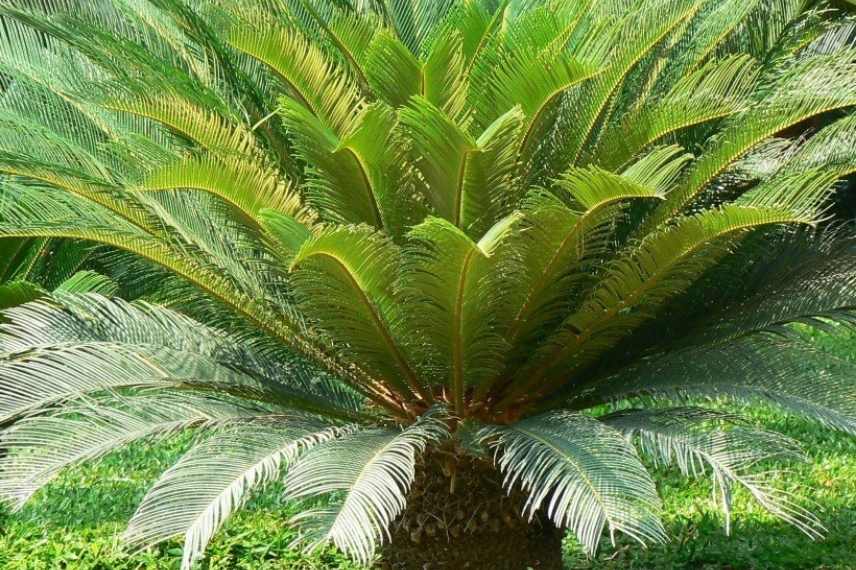
Cycas revoluta
Overwintering a potted Cycas
Cycas tolerates cultivation in pots very well and advantage of this cultivation is its « mobility »: you can move the pot to protect or shelter it before a cold snap in winter.
Which type of pot?
Choose a pot slightly larger than the one you bought it in. You can increase pot size progressively at each repotting. We also recommend a terracotta pot, as roots breathe better than in a plastic pot.
Lorène’s little tip: a pot fitted with castors will be very handy for moving your cycas more easily without straining your back.
Take care to prepare a mix of coarse sand, a good horticultural potting compost and garden soil, in equal parts (one-third each), and do not forget a layer of about 3 cm of drainage material (clay balls, red pozzolana…) at bottom of pot.
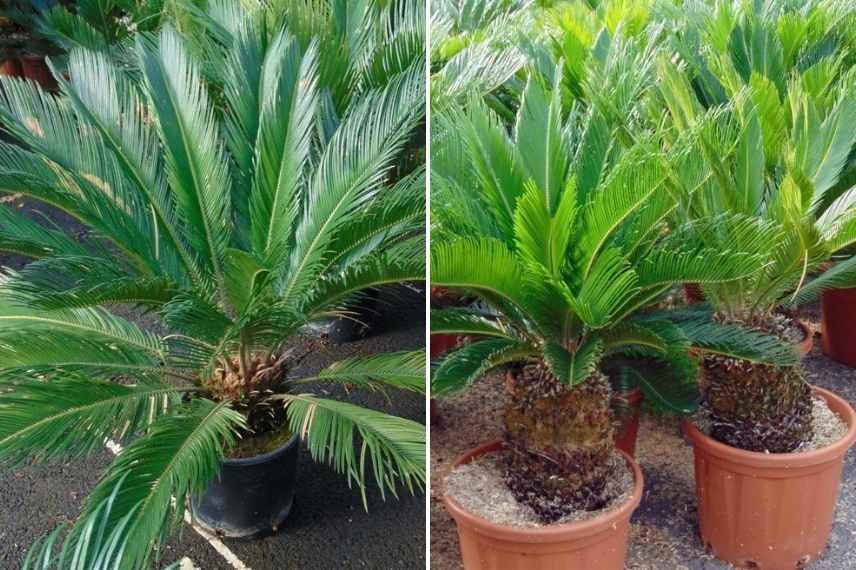
When to bring it indoors?
This plant is hardy to frost down to −8°C. Be vigilant and consider bringing it indoors at first signs of cold, in November/December depending on region.
Where to bring it indoors?
Store your Cycas in a bright place protected from cold and frost. Ideal locations are a conservatory, a cold greenhouse or any other shelter where temperature does not fall below 5°C. Ideally, a bright room between 12°C and 18°C.
Caring for a potted Cycas
Cultivation of Cycas in a pot requires some precautions and a little maintenance :
- When temperature falls below 15°C, watering should be greatly reduced, allow substrate to dry out before watering, on average every 15 days and stop fertiliser applications ;
- In dry atmosphere, mist the foliage from time to time ;
- Using a good, sharp pruning shear, cut back flush, as leaves yellow and dry at base of the stipe ;
- Repotting can be done every 2 to 3 years in spring. If plant has become too large to be repotted, simply carry out a top-dressing (add good potting compost to replace old surface compost) each year. Resume watering gradually (always allow top few centimetres of compost in pot to dry between waterings) and fertiliser applications such as an organic fertiliser for palms, yuccas and cycads ;
- You can put the pot outside again when hard frosts are no longer expected, between late February and April depending on region, in a bright spot sheltered from draughts ;
- Beware of atmospheres that are too dry and confined, conditions favourable to mealybugs and red spider mites to which Cycas is susceptible.
Finally, if you bring your Cycas indoors, ensure it is kept out of reach of children and pets. Indeed, all parts of Cycas are toxic and ingestion can be very dangerous.
Protecting a Cycas planted in the ground
Around Mediterranean coasts, Cycas can overwinter outdoors without concern. In gardens where in-ground cultivation is possible but temperatures are really marginal, protect it as a precaution. Indeed, Cycas leaves are scorched and damaged from -3°C. Severe frosts can be fatal, as it cannot tolerate temperatures below -8°C, at which point the plant dies.
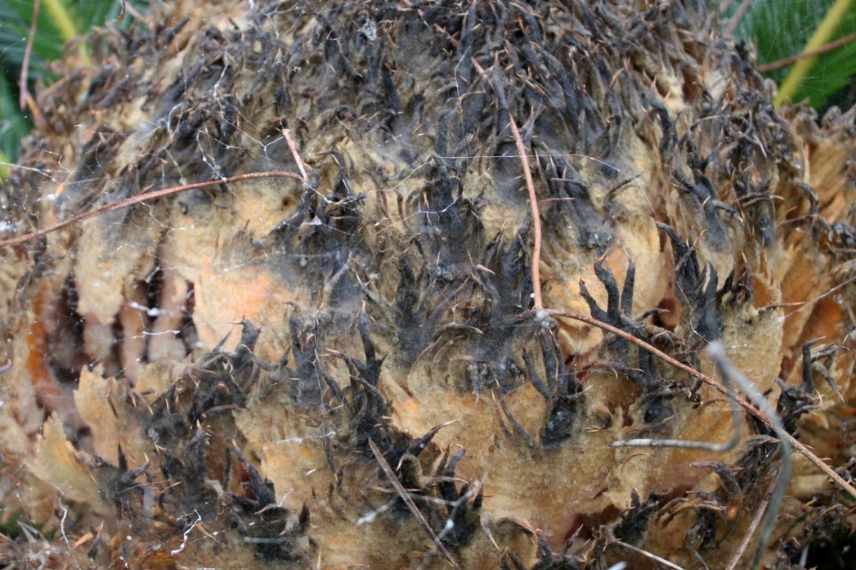
Frost has scorched the centre of this Cycas
You can protect it as follows :
- Begin by gathering and tying the fronds using string ;
- Place a wire mesh all around the Cycas then fill it with straw ;
- Cover everything with fleece or a winter cover ;
- On winter days when the sky is overcast and temperatures are above freezing, do not hesitate to open the protection to ventilate to avoid rot and let the plant breathe for a few hours.
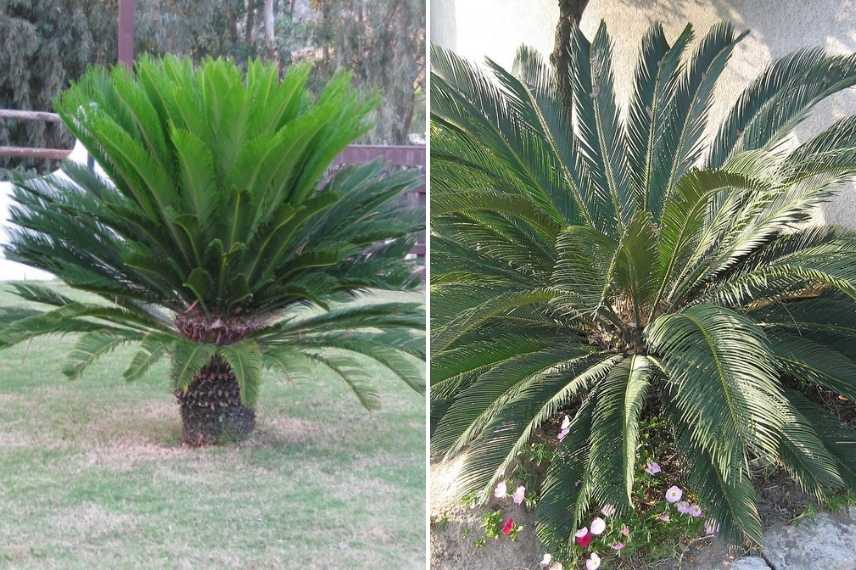
Gardeners' questions
Why are Cycas leaves yellowing?
- If it is old leaves that are yellowing, this is normal; Cycas foliage renews every year. Simply cut these yellowed fronds back to the base. They will make way for new, healthy green leaves.
- If yellowing is widespread, it is very likely due to excess water. Stop watering, remove saucer if present to allow water to drain away and let the potting mix dry out well between waterings. Cycas hates roots sitting in water, so improve drainage if necessary. Cut yellowed fronds; other healthy green ones should appear afterwards.
- Another possibility: leaf yellowing can be the result of frost.
My Cycas has been frost-damaged, what should I do?
Do not panic if foliage has suffered from frost. Leave damaged leaves in place; they will cover and protect the centre of the plant (where new petioles will regrow). Also, Cycas may reshoot from the base. When frosts are no longer a risk, you can cut away damaged leaves and there will be no sign of damage.
I notice white spots on my Cycas leaves — what is it?
If you notice whitish cottony clusters on your Cycas leaves, it is very likely that mealybugs have settled in. Follow our advice to get rid of them: Mealybug: identification and treatment.
- Subscribe!
- Contents
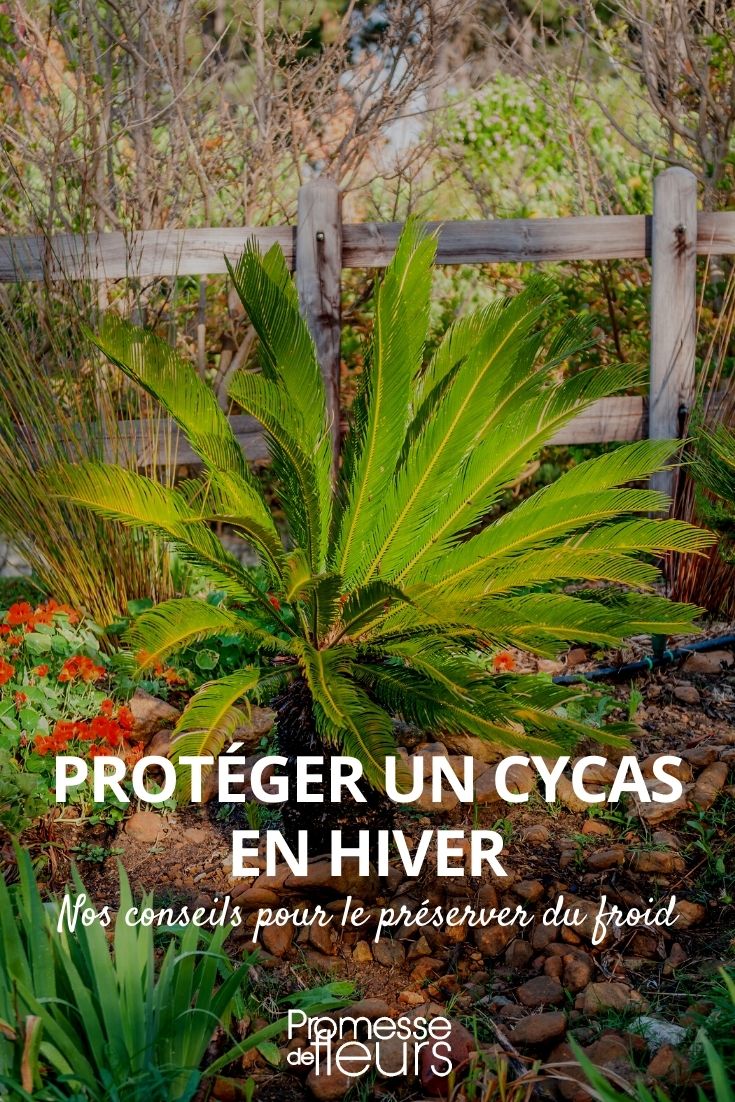































Comments